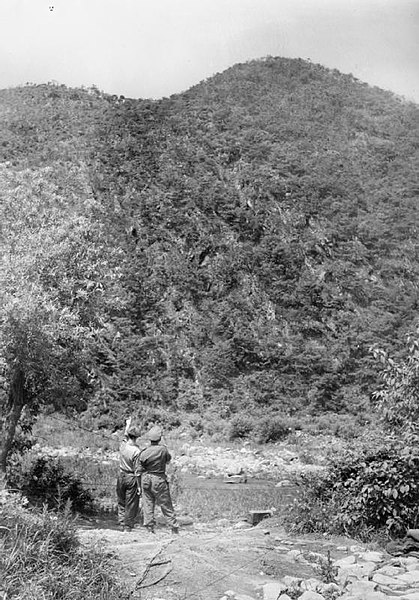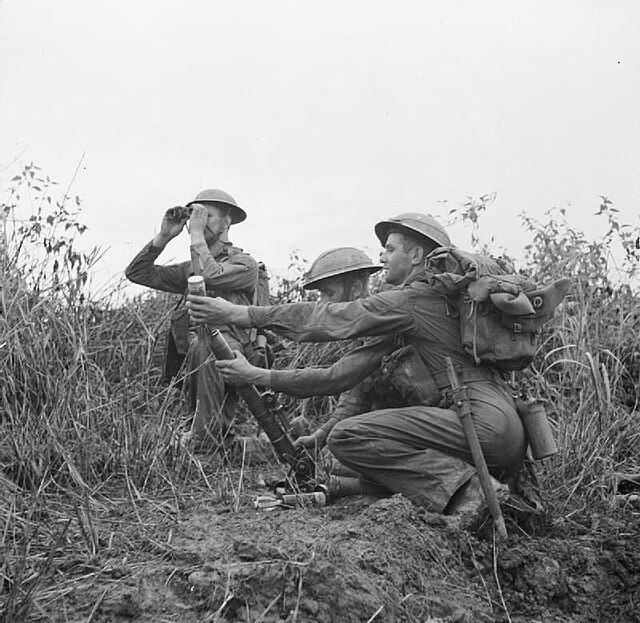Battle of the Imjin River
The Battle of the Imjin River, also known as the Battle of Solma-ri or Battle of Gloster Hill in South Korea, or as Battle of Xuemali in China, took place 22–25 April 1951 during the Korean War. Troops from the Chinese People's Volunteer Army (PVA) attacked United Nations Command (UN) positions on the lower Imjin River in an attempt to achieve a breakthrough and recapture the South Korean capital Seoul. The attack was part of the Chinese Spring Offensive, the aim of which was to regain the initiative on the battlefield after a series of successful UN counter-offensives in January–March 1951 had allowed UN forces to establish themselves beyond the 38th Parallel at the Kansas Line.
Centurion tanks of the 8th Hussars disabled during the retreat of 29th Brigade on 25 April
The deployment of UN forces during the initial stages of the Spring Offensive. Note the importance of 29th Brigade's position for stopping a direct advance on Seoul.
Chinese Spring Offensive, April 1951
Gloster Hill five weeks after the battle
29th Infantry Brigade (United Kingdom)
The 29th Infantry Brigade was an infantry brigade unit of the British Army. It was originally raised in 1914 and saw service during the First and Second World Wars and the Korean War.
Troops rushing ashore from a landing craft during combined operations training by 29th Infantry Brigade Group at Loch Fyne, Argyllshire.
Men of the 2nd Battalion, Royal Welch Fusiliers use paddy fields for cover as they approach Japanese positions around Pinbaw, 1944.
A 2-inch mortar team of the 2nd Battalion, East Lancashire Regiment, keep up covering fire during the advance on Pinbaw, December 1944.
Tanks and infantry of the 29th Brigade advancing to attack Hill 327, March 1951.








